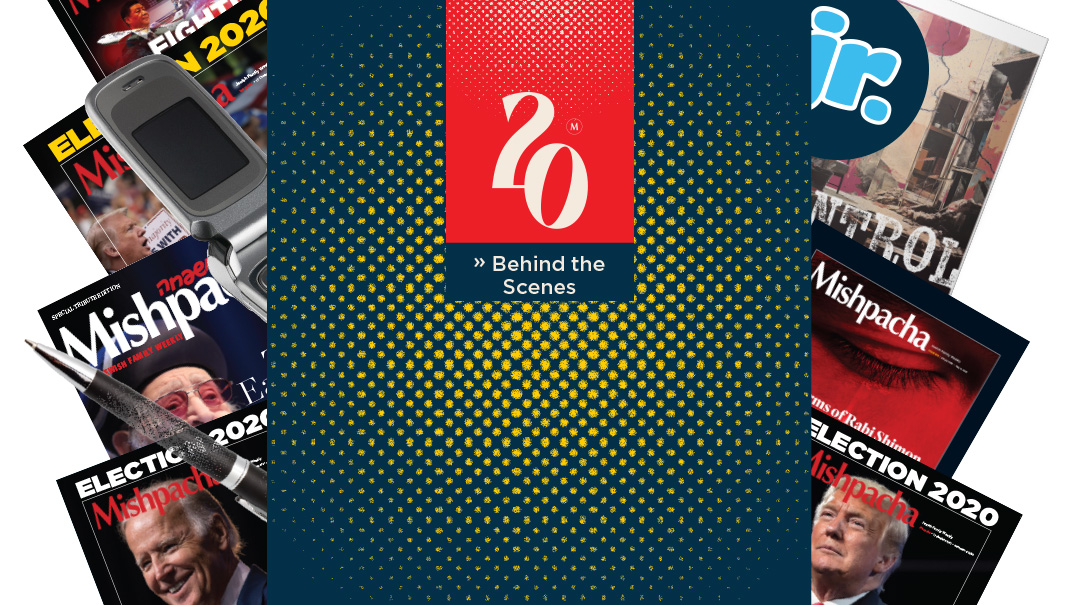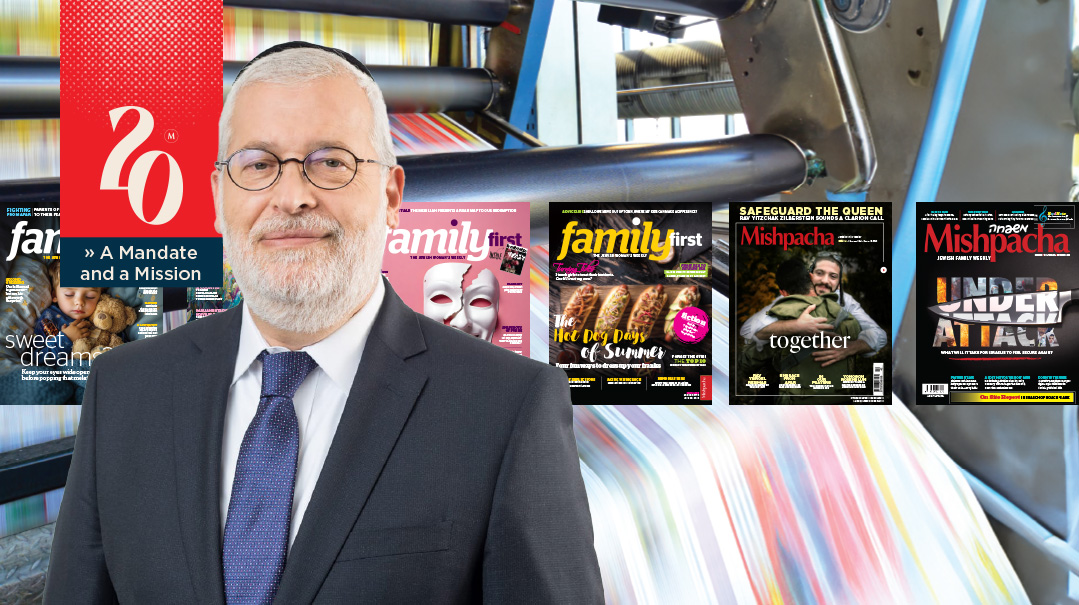Hustle and Heart
| April 16, 2024We spoke to some of the visionaries who’ve led the advances in frum marketing during the past two decades

As the frum magazine industry developed and expanded to the force it is today, the advertisements hosted on its pages came of age as well. Open Mishpacha today and you’ll find a showcase of marketing material saturated in creativity, intelligence, and sheer heart. Who are the brains behind these advertising campaigns forging public opinion, branding new goods and services, and raising hundreds of millions of dollars for tzedakah? We spoke to some of the visionaries who’ve led the advances in frum marketing during the past two decades to find out.
Our Panelists

Ad by Ad
Year by Year
2004
All About Design
Since the 1990s there have been amazing frum agencies doing excellent work. Back then, the focus was on design, and ads were designed by graphic designers.
—Yitzchok
2005
Beyond Design
As we worked on the “Bloomberg for Mayor" campaign, we realized we were much more of a marketing firm than a design firm — so we switched our name from Bottom Line Design to Bottom Line Marketing Group.
—Yitzchak
2006
Text Heavy
The ad styles were “ungepatchked” and text heavy. It was all design, no concept. Text was homemade, written by someone who knew how to put together the words. And the more words you got in, the better.
—Shlome
2009
Market Approach
This is the year that marketing agencies emerged, offering a full spectrum of services. The design was only a small piece of it.
—Chayale
2010
Clean and Strong
This is the year that less became more. Ads became clean and beautiful with a strong brand identity through iconic colors and fonts. And we began thinking beyond design. We touched on strategy — focusing on one element that delivered a punch.
—Yossi
Can You Feel It?
This was the point when smart advertising campaigns began influencing our attitudes and decisions. A good campaign could make us want things we never before dreamed of. Ads made us feel. With the Rich Chocolate campaign, Pivot Group made us feel a certain way about a chocolate bar.
Strategic marketing also helped us convey the essence of an organization. The possibilities were endless because people were able to feel for an organization like never before.
—Chayale
2013
A Culture is Born
People began respecting the value of the marketing industry and admiring talent. Marketing guys were cool artists who had fun with your brain. At GCNY, we created a Manhattan vibe in a Brooklyn agency. We intentionally added a culture of excitement and electricity. Who wouldn’t want to take a helicopter ride with their coworkers? People wanted to be part of a gutsy, hip place. And that attracted cool talent.
—Yossi
2014
Less is Bold
Minimalism and simplicity caught on. The more you talk, the smaller you are. Less is bold.
We no longer jumped directly to design. Instead, we started strategizing from the bottom up with intense research and discovery. Strategic writing came into play with brilliant copy that let us get into the reader’s brain. We worked on positioning companies with a certain feel: sunny, fresh, and delicious, or luxurious, minimalistic, and sophisticated.
Once we nailed the strategy, we then got to work creating a visual design system to recognize and “feel” a company — even without the name or logo. That was a huge accomplishment.
—Yossi
2015
Tight is Right
We noticed that our readers’ attention span was shrinking, so we tightened our messaging. We had to catch them during that first glance — or it was on to the next page. Of course, that comes with a risk, so the simpler the ad, the more confidence you need.
—Shlome
2016
In an Instant
The world was changing and there was a need for instant reaction. With print there’s always a delay. Imagine if we could put something online and get an instant reaction? It took a nuanced understanding to maximize the results. How could we best connect so people would react? We needed the right headlines with the right pictures.
—Chayale
Oops! We could not locate your form.







